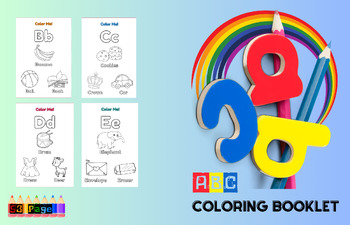Beginning Sounds Worksheets Coloring Pages Color by Code Alphabet Letters
- PDF
Description
Beginning Sounds coloring worksheets are excellent for beginning sounds practice and alphabet review or instruction. Perfect for no prep beginning sounds morning work. When teaching reinforcing the alphabet letters, sounds, and long vowels is essential to building confidence in reading. These beginning sound activities are engaging and help Pre-K, Kindergarten, and first-grade students build their skills while being exposed to consistent phonics and phonemic awareness instruction. Students in primary grades can use this beginning sounds resource to reinforce their learning and provide practice with valuable skills during morning work, centers, early finishers, small group instruction, or intervention time.
This Beginning Sounds Coloring Practice is a fun and engaging activity to help your students understand alphabet letters, letter sounds, long vowels, and practice or review initial sounds. First sound fluency is a great beginning-of-the-year activity and well-suited for alphabet boot camps (or anytime for that matter)!
Another great way to use this product is with students who need extra practice with sounds. It would be ideal for special education or reading specialists! This resource will also help increase fine motor skills and build muscle strength in their fingers!





